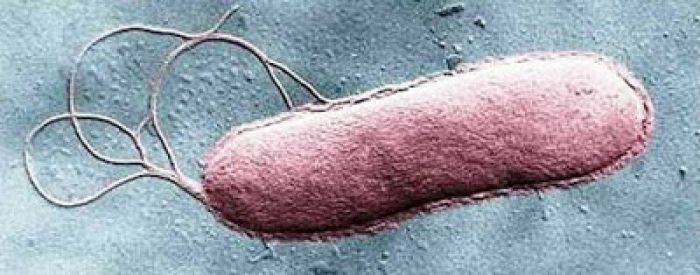Medically reviewed and approved by a board-certified member
Microbiology
Sabotaging flagella of bacteria to halt infections
By BS MediaTwitter Profile | Published: Wednesday, 28 September 2016

Some bacteria have the ability to ‘swim’ in a controlled fashion through the use of appendages called flagella. Researchers think that disabling these flagella is a key step towards infection control.
Motile bacteria move through the function of flagella. These appendages rotate, which propels an organism forwards. This is a little like the propellers on a boat. Some bacteria have one flagellum, others have many, and some possess none at all. Some of the bacteria regarded as human pathogens have flagella. An example of a flagellate bacterium is the ulcer-causing Helicobacter pylori, which uses multiple flagella to propel itself through the mucus lining to reach the stomach epithelium. Some flagella also serve a function in environmental detection, sensing different conditions and signalling to a bacterium to move to or away from a given niche.
Read more: Sabotaging bacteria to halt infections
Motile bacteria move through the function of flagella. These appendages rotate, which propels an organism forwards. This is a little like the propellers on a boat. Some bacteria have one flagellum, others have many, and some possess none at all. Some of the bacteria regarded as human pathogens have flagella. An example of a flagellate bacterium is the ulcer-causing Helicobacter pylori, which uses multiple flagella to propel itself through the mucus lining to reach the stomach epithelium. Some flagella also serve a function in environmental detection, sensing different conditions and signalling to a bacterium to move to or away from a given niche.
Read more: Sabotaging bacteria to halt infections
End of the article